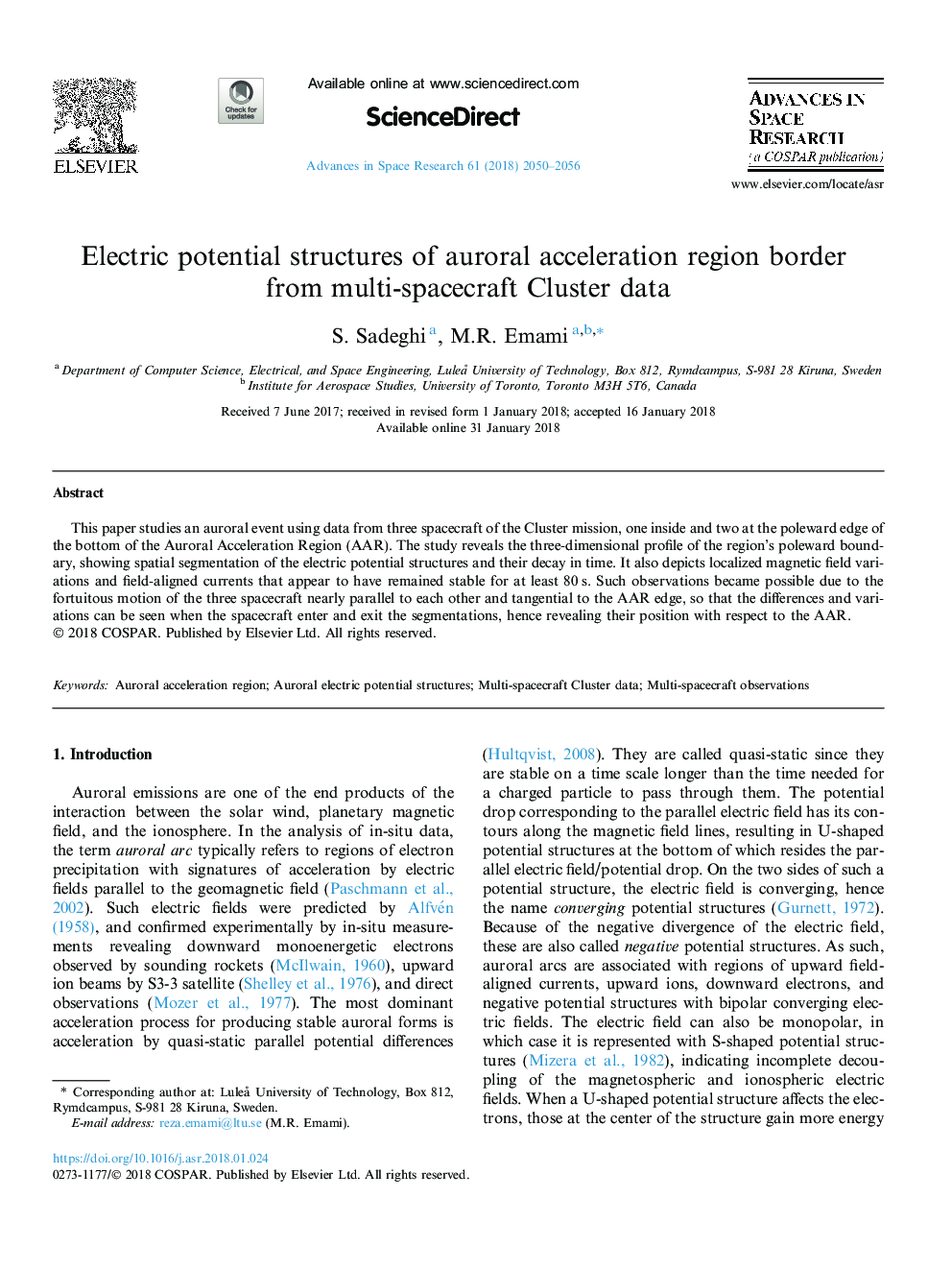| Article ID | Journal | Published Year | Pages | File Type |
|---|---|---|---|---|
| 8132046 | Advances in Space Research | 2018 | 7 Pages |
Abstract
This paper studies an auroral event using data from three spacecraft of the Cluster mission, one inside and two at the poleward edge of the bottom of the Auroral Acceleration Region (AAR). The study reveals the three-dimensional profile of the region's poleward boundary, showing spatial segmentation of the electric potential structures and their decay in time. It also depicts localized magnetic field variations and field-aligned currents that appear to have remained stable for at least 80â¯s. Such observations became possible due to the fortuitous motion of the three spacecraft nearly parallel to each other and tangential to the AAR edge, so that the differences and variations can be seen when the spacecraft enter and exit the segmentations, hence revealing their position with respect to the AAR.
Keywords
Related Topics
Physical Sciences and Engineering
Earth and Planetary Sciences
Space and Planetary Science
Authors
S. Sadeghi, M.R. Emami,
